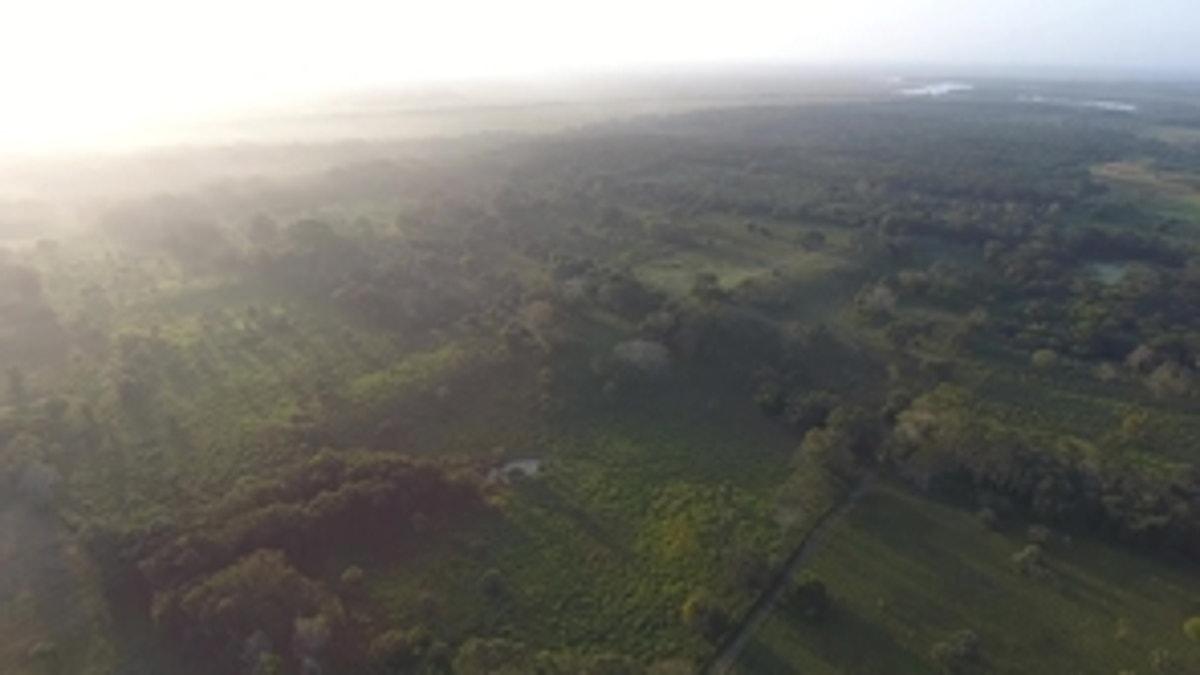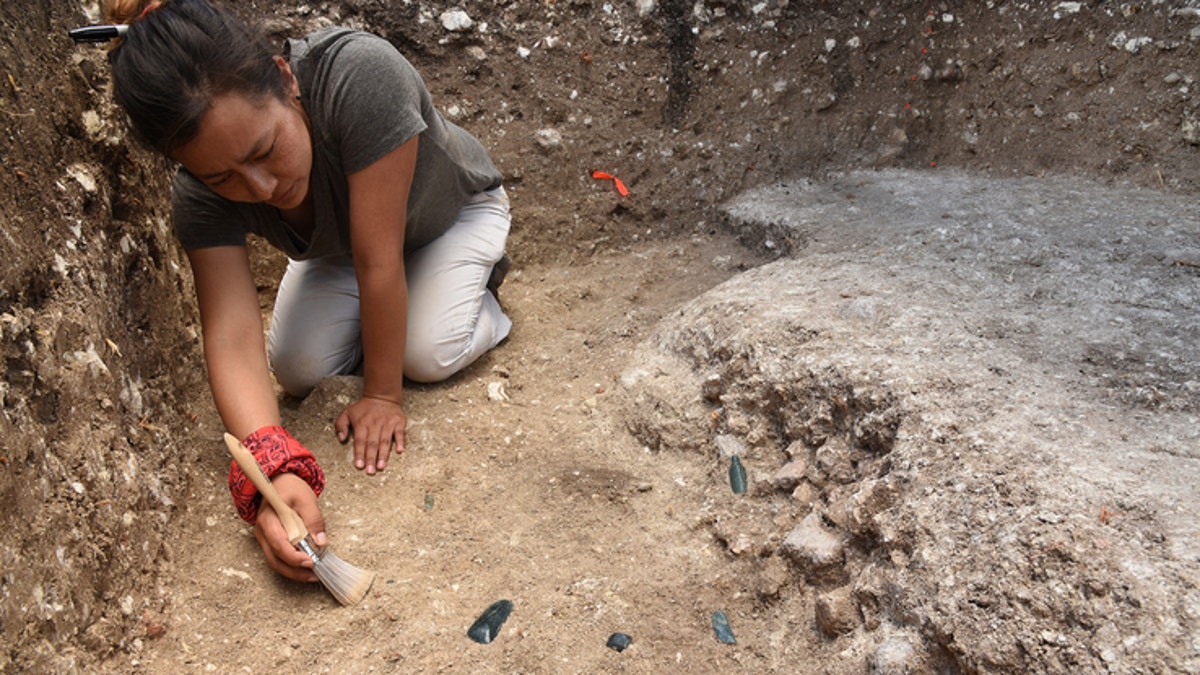1,500-year-old mask of Maya ruler found
Researchers have uncovered a 1,500-year-old stucco mask of Maya ruler K'inich Janaab 'Pakal. What differentiates this mask from others is it’s seemingly made in the king’s likeness.
Experts have discovered the largest, oldest Maya monument near Mexico’s border with Guatemala.
Researchers from the University of Arizona discovered the site of Aguada Fénix in Tabasco in 2017, but have just released details of the find.
The monument is 4,600 feet long and between 30 and 50 feet high, according to the University of Arizona website. It also encompasses nine causeways.
LONG-LOST MAYA CAPITAL DISCOVERED IN BACKYARD IN MEXICO
An international team of experts led by University of Arizona professors Takeshi Inomata and Daniela Triadan made the discovery.

An aerial view of Aguada Fenix's Main Plateau and the ramps connecting to causeways. In this photo, the site is viewed from the northwest. (Photo: Takeshi Inomata)
The monument was found using LiDAR (Light Detection and Ranging) technology. LiDAR uses a laser to measure distances to the Earth’s surface and can prove extremely valuable to study what is hidden in areas with thick vegetation.
"Using low-resolution lidar collected by the Mexican government, we noticed this huge platform. Then we did high-resolution lidar and confirmed the presence of a big building," said Inomata on the University of Arizona website. "This area is developed – it's not the jungle; people live there – but this site was not known because it is so flat and huge. It just looks like a natural landscape. But with lidar, it pops up as a very well-planned shape."
INCREDIBLE MAYA DISCOVERY: ANCIENT KING'S MASK UNCOVERED IN MEXICO
The site was then excavated and the archaeologists radiocarbon-dated 69 charcoal samples, which revealed it was constructed between 1,000 and 800 B.C.
Prior to this discovery, the oldest known Maya monumental site was Ceibal, which was built in 950 B.C., the University of Arizona explains. “This oldest monumental building at Aguada Fénix is also the largest known in the entire Maya history, far exceeding pyramids and palaces of later period,” it adds.

Part of the Aguada Fenix site being excavated by Melina Garcia. (Photo: Takeshi Inomata)
The research is published in the journal Nature.
The find is the latest in a series of fascinating Maya discoveries. In a separate project, the capital of a long-lost Maya kingdom was recently discovered in the backyard of a cattle rancher in Mexico.
MAYA ARTIFACTS USED IN RITUAL SACRIFICES DISCOVERED AT THE BOTTOM OF SACRED LAKE
Last year, experts discovered a unique ancient tool in southern Belize that was used by Maya salt workers more than 1,000 years ago.
In 2018, an ancient mask depicting a seventh-century Maya king was discovered in southern Mexico.
Also in 2018, archaeologists harnessed sophisticated technology to reveal lost cities and thousands of ancient structures deep in the Guatemalan jungle, confirming that the Maya civilization was much larger than previously thought.
MYSTERIOUS LOST MAYA CITIES DISCOVERED IN GUATEMALAN JUNGLE
LiveScience reported that hundreds of Maya artifacts that may have been used in ritual animal sacrifices were also discovered at the bottom of a Guatemalan lake.
CLICK HERE TO GET THE FOX NEWS APP
From its heart in what is now Guatemala, the Maya empire reached the peak of its power in the sixth century, according to History.com, although most of the civilization’s cities were abandoned around 900 A.D.
The Associated Press contributed to this article. Follow James Rogers on Twitter @jamesjrogers

